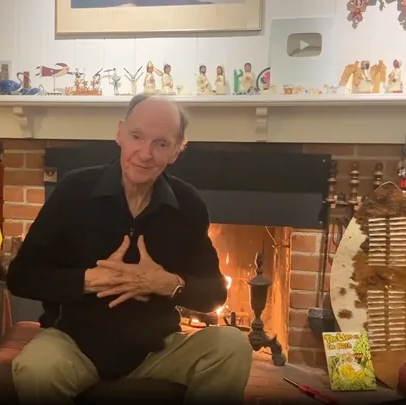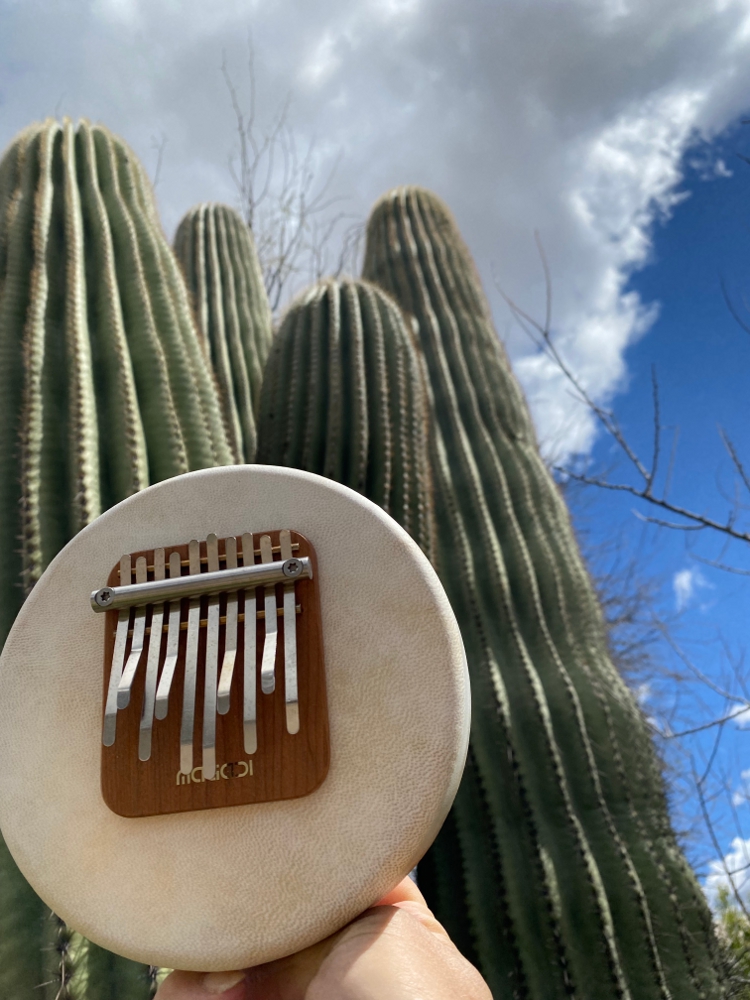
Use of this website constitutes acceptance of the Privacy Policy and User Agreement. Copyright © 2020 Kalimba Magic. All Rights Reserved.
The core principle in western music theory is that when you are on the “V” chord – denoting a chord based in the fifth degree of a scale – (or “V7” chord) it pushes the music to go to the “I” – denoting a chord based in the first degree of the scale. Everything else in music theory is window dressing, giving us interesting ways of taking our time to get to the “V” and then the “I.”
If you don’t know anything about the “V” chord or the “I” chord, don’t worry – we have great recordings that will illuminate. The “I” chord is like home base. The “V” chord is the ultimate journey away from home, but it also leads you back home (except when it doesn’t, in a deceptive cadence, but we’ll ignore that twist).
This article compares how the “V → I” chord progression works in western music, in two-phrase karimba music, and in four-phrase mbira music. The similarities and the differences are fascinating.
I’ve been told by numerous people on different occasions that African music is not chordal and cannot be described by western music theory. I think those people are just plain wrong, and I hope you understand why, after you listen to these musical examples.
African music might not utilize full 6-note guitar chords or four-part choral arrangements to unambiguously define chord progressions, but there are chords flying around that are built out of the different melodic lines. On the karimba and mbira, those intersecting, interacting melodic lines are played by a single person on a single instrument. And remarkably, the harmony in African music and in western music seem to me to be more similar than they are different.

In the key of G, the V chord is D and the I chord is G. If you didn’t get that, consider that G=1, A=2, B=3, C=4, D=5. The V chord is like saying “Get me OUTA here,” and we are rescued by going back home to the I chord. (This is called “resolving.) Exactly how does that work? The bulk motion is shown in the third measure, going from D to G. But at least as important is this internal motion, from F# (which is the major 3rd of the D chord) up a half step to G (which is the root of the G chord). The 7th of D7, or C, also resolves into B, the major 3rd of the G chord).
In western music, the progression V → I is often called a cadence. It is a signal to the players and the listeners.

It is difficult to find western songs that don’t use the V → I progression. Since everyone knows “Joy to the World,” it makes a good illustration. There are two V → I progressions in the first two lines. The first one is at the end of the first line, and is a smaller one (because the V chord only lasts one beat, and because the melody goes down), and the one on the second line is more definitive (because the V chord lasts two beats, and the melody goes up and the I chord lasts much longer too).
This hints at the usage of the V → I progression in western music: it is musical punctuation. The first one is a comma, and the second one is an exclamation point!
These are signals to everyone: To dancers, this progression signals that we are at the end of a phrase and we need to do something to acknowledge that. Dancers can feel the building of tension in their bodies at the V, and the release of tension at the I. Musicians playing instruments make the V chord and then release into the I chord. Listeners hear the change, dancers feel the change, and the musicians understand the change.
But how does this all work in African music?

That understanding shared by musicians, dancers, and listeners of western music which I just described is totally cultural. In western cultures, it has been established, understood, and played around with for more than a thousand years. It would make sense that in Africa, which is in fact a conglomeration of many cultures, all totally different from western, that these chords did not have the same meaning. But the marvelous message I bring today is that at least in some African music, the V → I progression serves a purpose similar to the role it plays in western music.
The song “Sadza Madya Here” is transcribed in tablature at the end of Paul F. Berliner’s book “The Soul of Mbira,” and is harmonically representative of “two-phrase karimba music.” One must use some caution in applying western harmony based on three-note chords to African music that uses two-note chords – that is, the assignment of chords can be ambiguous. This is where my western preconceptions might color my interpretation of African music. That said, there are other songs that do fill out the western three-note chords with arpeggiated melodies, where the notes of chords are played in succession and not simultaneously.
The last measure of “Sadza Madya Here” is mostly a V chord, but it ends on a iii chord… and then immediately the music repeats and we start over again, on the I chord. In other words, the V → I pattern is here too, but seems to be interrupted by the iii chord. I argue that the iii chord is used more as a decorative element and less as a structural element (as the V and I chords are). Supporting this is the fact that the iii chord ends the first, third, and fourth measures. It is not unexpected, and as such is not so important.The V chord, however, happens only once, in the fourth measure. When it is played, we pay attention to it, and the iii chord is sort of just in passing. To emphasize this point, I leave out the iii chord entirely in the guitar part in the recording that corresponds with the image below, and it is not at all missed. Would you agree? (Also supporting my assertion: many other karimba songs that JUST do V → I without the iii.)
In western music, the V chord gets our attention, shouting out “THE…” and the I chord puts us down again, shouting out “END!” In African music, the “V” chord sets us off balance, and the “I” chord steadies us and starts us out at home base, going back for yet another cycle of the infinite merry-go-round of African music. (By the way, this African way is also used in western music; it is called an elited cadence, where the final I chord is also the start of the next section.)
I think western music is deliberate and matter of fact, and is mainly concerned with setting things right in an obvious way. I think African music is much more concerned with keeping the energy up and keeping people dancing!

While a lot of two-phrase karimba music contains a fairly obvious use of the V → I progression, four-phrase Shona mbira music is more complicated. Mbira music is much more complex than karimba music in many ways. One of those ways is that in the mbira cycle, you can see the music as starting in many different places. The red chords above represent the cycle starting in one place, and the blue chords represent the cycle starting in a different place. There is just one V chord in the cycle, and in the red chords, the V comes at the end of the first phrase. Yes, it is followed by the I chord, so there is a V → I progression buried in the cycle, but it is not in a prominent place or filling a prominent role.
In the blue chords, we start the cycle at what used to be the second phrase, and we tack what used to be the first phrase on at the end. Now, the last phrase ends with the V chord, which brings us back to the I chord at the beginning of the cycle. This is an important way to understand the changes in some traditional mbira music. It is obviously informed by my understanding of western music, but it is not the only way of interpreting mbira music.
In music, form mirrors function. The music we are considering here was built that way for a reason, and its purpose is to confuse the listener, to help them let go of their firmly held moorings and to float in the spirit world, and be led into a trance state. The music accomplishes this through repetitive cycles, slowly changing variations, and especially through ambiguity in multiple dimensions, including rhythm and harmony. The ambiguity of where the V chord comes in the sequence is disorienting. And still, no matter how the chord sequence is interpreted, the V → I does happen somewhere in the cycle, and it does inject energy into the ever spinning wheel of mbira music.
Western music tends to very explicitly tell you what key the music is in and where the “1” beat is. Western music would never hide the V → I. Rather, this is the most showy and flamboyant moment in the music of the west . But in African music? Traditional karimba music compared to mbira music was a bit more obvious and less ambiguous about the V → I. But mbira music got more sophisticated and made the nature of the V → I less explicit and less important.
Western and African music use the V → I progression differently – in western music the progression usually ends something, while in African music, it frames the end of the cycle and the beginning of the next cycle, spinning up the music. African music can even be more subtle, hiding the V → I progression. And yet, in both western and African traditions, the V chord gets our attention and provides the push to the I chord, even though the I chord has subtly different meanings in the two traditions.
What about other cultures? I only investigated music from two closely related African cultures, so I cannot generalize about all of African music, not to mention other musical traditions in the world. What about Indonesian or Chinese music, for example? I know that these cultures have scales that are very different from the western scale. However, so does African music, and in spite of the differences in scales, I can state with certainty that the fundamental nature of the V → I harmonic progression comes through the African karimba and mbira music that we have studied loud and clear.
In my mind, the commonality of the V → I harmony points to an essential unity of diverse musics from southern Africa and Europe. I have no doubt that, through music, we are all one big family.


Sign up for our newsletter and free resources with your email address:
We pinky promise not to spam you and to only send good stuff.
 Assist Paul Tracey Rebuild His House in Pacific Palisades
Assist Paul Tracey Rebuild His House in Pacific Palisades 8-Note Spiral Kalimba Turned into a Student Karimba
8-Note Spiral Kalimba Turned into a Student Karimba Seek to Infuse Your Musical Moments With Beauty and Magic
Seek to Infuse Your Musical Moments With Beauty and MagicUse of this website constitutes acceptance of the Privacy Policy and User Agreement. Copyright © 2020 Kalimba Magic. All Rights Reserved.